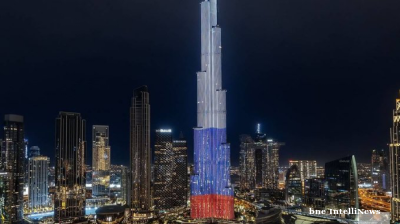In June 2025, Indonesia settled a long-running territorial dispute between two of its westernmost provinces, Aceh and North Sumatra. At the heart of the row were four small islands off Sumatra’s coast, whose administrative status had been unclear for years.
Aceh, located at the northern tip of Sumatra, is a special autonomous province with the right to implement Sharia law. It has a distinct political identity shaped by decades of conflict, which ended with the 2005 Helsinki peace agreement. In contrast, North Sumatra, home to the major city of Medan, is a key economic hub and fully integrated into Indonesia’s standard administrative system.
The ownership of Pulau Panjang, Pulau Lipan, Pulau Mangkir Gadang, and Pulau Mangkir Ketek quickly became more than a bureaucratic issue. It touched on historical grievances, regional pride, and national unity.
Origins
The root of the disagreement stretches back over a decade. The four islands: Pulau Panjang, Pulau Lipan, Pulau Mangkir Gadang, and Pulau Mangkir Ketek, sit in a grey area between the jurisdictions of Aceh and North Sumatra. Despite their small size and sparse populations, they became the centre of a high-stakes territorial row, largely due to unclear marine boundaries and overlapping local records.
In 2008 and 2009, Indonesia’s National Geospatial Agency, as part of the Tim Nasional Pembakuan Rupa Bumi, conducted a verification and mapping initiative to classify islands across the country. Aceh reported 260 islands under its administration, but notably, the four disputed islands were not among them. North Sumatra, on the other hand, registered 213 islands, including the four in question.
By 2017, the Ministry of Home Affairs (Kemendagri) used this verification, along with spatial analysis, to tentatively designate the four islands as part of North Sumatra. However, Aceh later revised its coordinates, claiming the omission was due to clerical errors that had mistakenly referenced Pulau Banyak instead of the disputed territories.
Tensions rise
Matters escalated in early 2025 when Kemendagri issued a decree updating administrative island data. It formally placed Pulau Panjang, Pulau Lipan, Mangkir Gadang, and Mangkir Ketek under the administration of North Sumatra.
This move triggered backlash from Aceh. Residents and political figures condemned the decision, citing historical ownership, land use, and references in the 2005 Helsinki Peace Agreement - a landmark deal that ended decades of separatist conflict between the Free Aceh Movement (GAM) and the Indonesian government.
According to BBC News Indonesia, Suadi Sulaiman, Deputy Chairman of the Aceh Party and a former GAM member, warned that the decision could jeopardise the peace process and accused Jakarta of provoking tensions between the provinces.
Local sentiment and historical claims
Acehnese residents in Singkil district, particularly in the fishing community of Gosong Telaga, expressed concern over the reassignment. In an interview with BBC News Indonesia, a local named Yardi, aged 57, claimed to have personally helped establish boundary markers on Pulau Panjang and Mangkir Gadang over ten years prior. He pointed to the presence of government infrastructure, a cemetery, and past settlements as proof of Aceh’s longstanding ties to the islands.
Meanwhile, Teuku Rusli Hasan stated that the islands belonged to his family, referencing a 1965 land decree issued by the Aceh Agrarian Inspection Office. Local media also reported claims that other Acehnese residents possessed legal documents proving ownership of the disputed land.
The Aceh provincial government presented further evidence, including administrative documents from the 1960s, a government-built jetty, and memorial structures erected in 2008 and 2018. One key piece of evidence was a joint decision signed in 1992 by the then-governors of both provinces, with the Minister of Home Affairs acting as witness.
In response, the Ministry of Home Affairs defended its stance by pointing to the physical location of the islands, which lie close to the coastline of Central Tapanuli, North Sumatra. As the maritime boundary between the two provinces remains unsettled, proximity to land was used to determine jurisdiction.
Safrizal Zakaria Ali, Director General of Regional Administration at the Ministry, told Kompas that Aceh’s official 2008 submission to the national mapping team had not included the four islands. He also said that multiple inter-provincial meetings had taken place over the years but had failed to reach a resolution.
Mediation attempts
Then, on June 4, Governor Bobby Nasution of North Sumatra visited Banda Aceh alongside Central Tapanuli’s regent to meet Aceh’s Governor Muzakir Manaf. According to BBC News Indonesia, the meeting was brief as Muzakir was reportedly preoccupied. Nasution stated that the aim was to cool tensions and explore a shared solution.
Following earlier objections from Aceh in 2022, the central government agreed to a joint field survey between May and June. Despite these efforts, and each province presenting its own interpretation of historical boundaries, a consensus could not be reached.
On June 17, the government announced its decision through State Secretary Minister Prasetyo Hadi: the four islands would remain under the administration of North Sumatra. President Prabowo Subianto approved the resolution after reviewing reports and supporting data from the Ministry of Home Affairs.
The central government acknowledged both sides had submitted strong claims. However, Prasetyo stated the decision aimed to ensure clarity and maintain national unity.
What next?
Although the matter is now officially closed, policy experts note that the handling of the dispute highlights deeper flaws in the country’s decentralised governance structure. According to Armand Suparman from the Regional Autonomy Monitoring Committee (KPPOD), similar conflicts are likely unless the government develops clearer frameworks for resolving inter-regional claims.
As national focus intensified around the four islands, Governor Nasution shared his vision for joint resource management with Aceh, BBC Indonesia reports. He proposed that natural wealth, including tourism and resource extraction, be developed collaboratively to benefit both provinces. His remarks were quoted in BBC News Indonesia.
According to the Ministry of Energy and Mineral Resources (ESDM), offshore areas near Singkil are believed to contain substantial oil and gas reserves. This finding adds another layer to the dispute, with implications for future regional development.
However, the existence of oil and gas potential should not be used to justify actions that undermine community rights, environmental protection, or the cooperative relationship between Aceh and North Sumatra. Sustainable and inclusive management must remain at the heart of any plans moving forward.
Features

CEE needs a new growth model as FDI plunges
wiiw economist Richard Grieveson says the CEE region’s long-standing model of attracting FDI through low labour costs no longer works.
KSE: Ukraine is facing a $53bn budget shortfall, but economy is stable for now
Ukraine is in urgent need of additional financing from partners as the continuation of the war drives up defence spending and reconstruction needs, jeopardizes budget financing, weighs on the balance of payments, and slows economic growth.

PANNIER: Ruling family’s ‘palace in the sky’ cruel sight for Turkmenistan’s poor souls down below
Photos posted of renovated Boeing by US makeover manager offer further insight into "ultra-luxurious" world enjoyed by Berdimuhamedovs.

Russia tax service targets Russian accounts in UAE
The Russian Federal Tax Service (FTS) has ramped up its scrutiny of Russian nationals holding accounts in the United Arab Emirates, following the effective implementation of automatic tax information exchange between the two countries.




